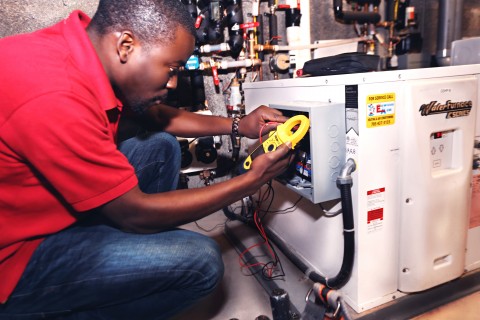Performance of Urban Geoexchange Systems in the GTA
 To build confidence in geoexchange technology, there is a clear need for improved demonstration and documentation of existing geoexchange systems. Towards this end, this study evaluated the performance of ten Greater Toronto Area geoexchange systems using monitoring results from approximately one year of operation. The study aim was to determine whether systems were performing according to expectations and to subsequently identify the key issues for those systems whose performance was outside of expectations.
To build confidence in geoexchange technology, there is a clear need for improved demonstration and documentation of existing geoexchange systems. Towards this end, this study evaluated the performance of ten Greater Toronto Area geoexchange systems using monitoring results from approximately one year of operation. The study aim was to determine whether systems were performing according to expectations and to subsequently identify the key issues for those systems whose performance was outside of expectations.
Systems ranged in size from small-scale residential to large-scale commercial. Measurements focused on the ground-loop side of the system, where possible, so as to limit the complexity of the monitoring. Several performance metrics were calculated for each site, including the heating coefficient of performance (COP), cooling energy efficiency ratio (EER), average cycle times, percentage time in-use, time-of-use electricity consumption and estimated greenhouse gas (GHG) emission savings.
It was found that all systems surveyed were sized sufficiently to meet their heating and cooling loads. A range of system performances were observed, with cases that fell short, met and even exceeded manufacturer rated values. Seasonal heating COPs, including both the compressor and ground loop circulator energy consumption, varied from 2.4 to 3.5. Seasonal cooling EERs varied from 10.9 to 28. It was suggested that the performance of current systems might be improved by taking measures to improve cycle times and interlock circulator pumps while future system’s performance might be improved (or costs reduced) with time-of-use control algorithms or with advanced operational strategies such as free-exchange.
In general, it was found greenhouse gas emissions reductions associated with heating a building using geoexchange as opposed to conventional fossil-fuel based technologies is on the scale of 1,000 kg eCO2 per ton of installed heating capacity per year. For residential homes, this savings is comparable to that achieved by taking an average car off the road every year.
